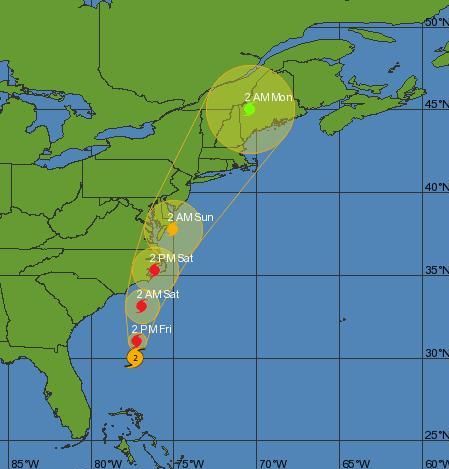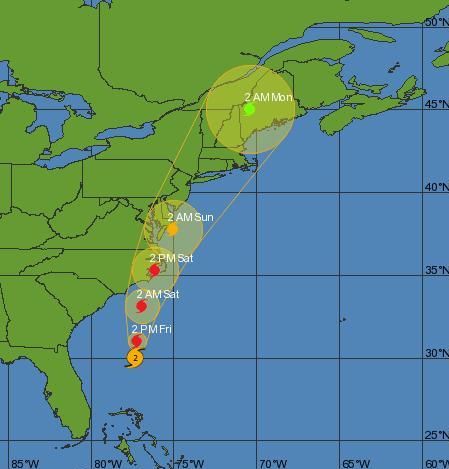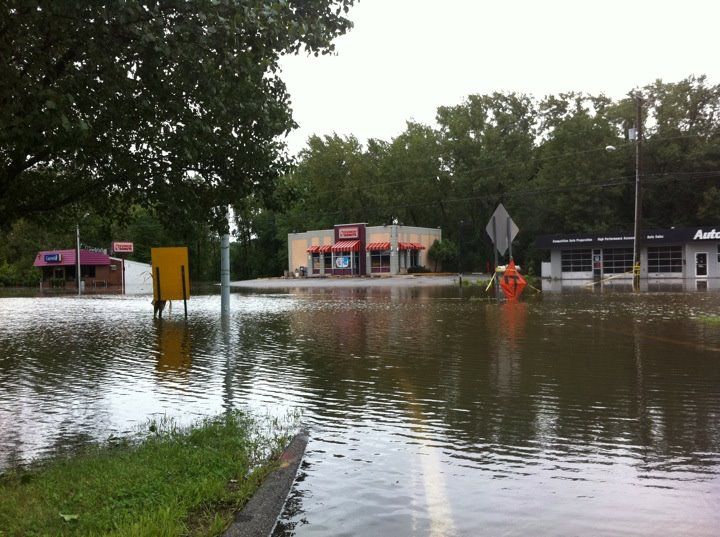
Hurricane Irene has finally passed, leaving a path of severe damage from the Carolinas to Canada. Surprisingly, even after Irene was downgraded to a tropical storm, some of the hardest hit towns were in Upstate New York and Northern New England.
Be prepared for the next big storm
Steps taken in advance of a storm will help to minimize damage. When a hurricane passes, many thousands of homeowners will no doubt be facing repairs to their homes. Here’s where we can use lessons Hurricane Andrew taught us nearly 20 years ago and documented by Fine Homebuilding‘s Charles Miller.
Act now to reduce severity of storm damage
First and foremost, take steps to protect yourself and your family from harm.
If you’re in an evacuation zone, heed warnings from public-safety officials. Don’t be a hero.
In areas where the storm is expected to strike, make sure flashlights and battery-operated radios are working and close at hand. Draw water in a tub for emergency use. Don’t forget your neighbors. If there are elderly or physically handicapped people living nearby, check on them. If you have a generator, make sure you have enough fuel for a couple of days, and start it now to make sure it works.
The Insurance Institute for Business & Home Safety recommends that businesses and homeowners take a number of precautions before a storm hits. It’s already too late in areas where evacuation orders have been issued, but if there’s time, the institute makes these recommendations:
- Cover doors and windows with shutters (if you have them on hand) or plywood (if you don’t). Blocking openings prevents pressure imbalances, which can lead to roof failure, while keeping broken glass and wind-driven rain out of the house.
- Seal gaps around water pipes, gas lines, air-conditioning lines, and other building penetrations where water could seep in.
- Get lawn furniture, lightweight yard structures, and other loose objects under cover, where they can’t become airborne missiles.
You also might want to check Fine Homebuilding‘s Forums for some ideas on prestorm preparations from those who’ve been through this before.
Because garage doors are so wide, they present unique challenges. For ideas on how to strengthen them, check this thread.
If you have a smart phone, there are a number of apps that may be useful. This comes from the Newark, N.J., Star-Ledger:
Android and iPhone:
• The iHurricane HD (free)
• The Weather Channel app (free)
• iMap Weather Radio ($9.99)
Disaster-readiness apps provide how-to guides for stocking your shelves, gathering supplies, and creating a customized escape plan depending on the situation. Topics include ways to recharge your phone when there is no electricity to methods of purifying water. The apps also provide offline access to resources in the event that internet access is unavailable.
Android
• Disaster Readiness (99¢)
• Disaster Survival Guide ($1.36)
• Are You Ready? (free)
iPhone
• Emergency Supply List (99¢)
• Disaster Readiness ($1.99)
• iEmergency (99¢)
Emergency repairs when the storm has passed
In the wake of the storm, many homeowners will be looking at repairs. Think about short-term steps first that can keep damage from getting any worse. When time allows and rebuilding starts in earnest, do it right. That’s where Chuck Miller’s tour of post-Hurricane Andrew may come in handy.
For flat-roof repairs, Kee Nethery of Berkeley, Calif., suggested this in FHB #133:
The primary repair material that I use is called Henry’s Wet Patch. It’s a sticky, black, tarlike substance that can be applied to wet surfaces—even underwater. But my secret ingredient is aluminum foil, and an assistant to help me apply it. Several garbage bags, some duct tape, and a disposable spatula are also required ingredients.
If you try this, you’ll get the Wet Patch on your hands and arms, so protect them with the garbage bags. Hold them in place with the duct tape. Scoop the Wet Patch with the spatula, and spread it over the hole. Have your helper tear off a piece of aluminum foil that will almost cover the Wet Patch. Press the aluminum foil into the Wet Patch with your covered hand, and use the spatula to press its edges into the Wet Patch. That’s all there is to it. When you are done, peel off the garbage bags, and stuff all the trash into them.
This kind of patch lasts a lot longer than a simple gob of Wet Patch spread over a hole in the roof. My theory is that the Wet Patch seals the leak and that the foil prevents the Wet Patch from outgassing, drying out, and ultimately cracking. It doesn’t make for a pretty patch, but it’s quick and will last for many years—plenty of time to schedule a new roof.
Tar paper can be an effective hedge against further rain damage, as Mark Kerridge of Casper, Wyo., suggested in FHB #85:
Sometimes you’ve got to get a house dried in before the roofers can install the shingles. Here in Wyoming, where the wind has been know to blow, builders usually tack hundreds of strips of wood lath over a roof covered with tar paper to keep the wind from picking the tar paper off. But then you’ve got to take the lath off again before the shingles can go on. Here’s a better way.
On our last job, we used tie wire dispensed from a reel and held down by air-driven staples. First, we stapled down the tar paper, using a hammer tacker. Then we ran the wire over all butt seams and lap seams between the sheets of tar paper and fastened the wire to the decking with staples on 12-in. centers. This system is a lot faster than putting down wood lath, and it holds the paper down extremely well. Best of all, when the roofers show up, they can put the shingles down right over the wire.
For permanent repairs, let history be your guide
Only days after Hurricane Andrew had done its grim work in Florida, then senior editor Charles Miller caught a flight south for a firsthand look at the damage, and what building techniques and materials might help to minimize damage in the future. His account appeared in FHB #78 is well worth reading.
The hurricane packed winds of up to 160 mph and destroyed nearly 80,000 southern Florida homes. In Homestead, one of the hardest-hit communities, 80% of the buildings were beyond repair.
Touring the area with Homestead building inspector Stan Makowksi, Miller took extensive notes on building practices that contributed to damage, covering everything from roofing materials and sheathing to wall and strap ties and siding. Dade County building codes subsequently became among the strictest in the country and a model for high-risk coastal areas. When rebuilding, make sure you’re up to date on current codes in your community and that you follow them to the letter.
Because roofs often take the brunt of damage in a major storm, reroofing will become a top priority for many homeowners. Stephen Hazlett, a roofer from Akron, Ohio, described a number of common mistakes in an article in FHB #172. Among them:
- Poorly fastened sheathing that causes nail pops.
- Misaligned starter courses.
- Improperly nailed shingles.
- Flawed shingles, and “breaking” new bundles of singles over the roof ridge.
- Misplaced step flashing and sloppy chimney flashing.
- Careless detailing in roof valleys.
Designing and modifying houses so that they are less dependent on outside sources of energy is another long-term strategy, which Alex Wilson discussed in a blog at GreenBuildingAdvisor. That’s not something homeowners are going to be doing early next week as the dust starts to settle, but part of real storm preparedness is long-term thinking that makes us less susceptible to problems in the first place.
Fine Homebuilding Recommended Products
Fine Homebuilding receives a commission for items purchased through links on this site, including Amazon Associates and other affiliate advertising programs.

Reliable Crimp Connectors

Handy Heat Gun

8067 All-Weather Flashing Tape




























